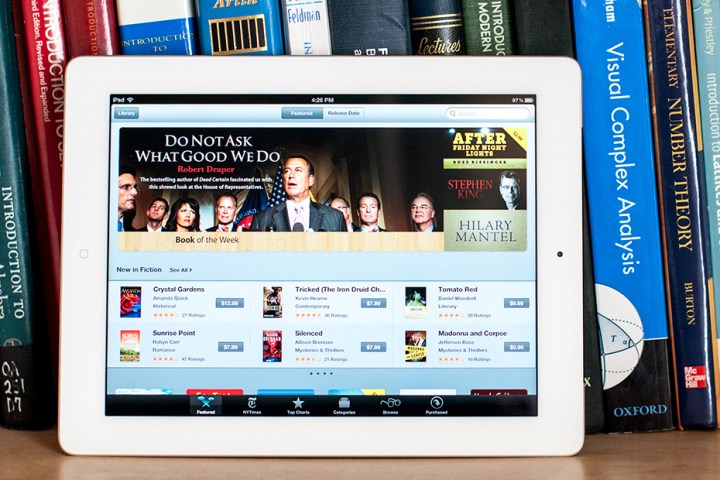
In that case, a credit or check could be on its way to you soon. Apple’s payout to U.S. customers marks the final stage of the long-running ebook price-fixing dispute that ultimately forced the tech giant into a $450 million settlement.
Starting June 21, millions of ebook buyers will begin receiving payments in the form of credits and checks for losses incurred as a result of an alleged price-fixing scheme involving Apple and a number of publishers, namely Hachette Book Group, HarperCollins, Macmillan, Penguin, and Simon and Schuster.
If you’re one of the affected customers, you can expect to receive a $6.93 credit for every ebook you bought that was listed as a New York Times bestseller, and a $1.57 credit for all other ebooks.
Attorneys are describing the refund process as “uniquely simple,” with payouts sent automatically to consumers’ accounts at major ebook retailers, including Apple, Amazon, Barnes & Noble, and Kobo.
Recipients can also expect to receive an email direct from the relevant retailer informing them that their account has been credited.
So who’ll receive a check and who’ll get a credit? According to law firm Hagens Berman, who litigated the case with the Department of Justice, “If ebook purchasers requested a check in lieu of a credit, they will receive a check. If purchasers received a credit during the first round of distribution of publisher settlements, and they did not opt out, they will automatically receive a credit.”
Hagens Berman described the settlement, which sees $400 million shared between affected customers, as “one of the most successful recovery of damages in any antitrust lawsuit in the country.”
As for the remaining $50 million, $30 million will go toward covering legal fees and $20 million will be shared among the 33 states involved in the lawsuit.
Apple was first accused of fixing ebook prices back in 2010, with the class-action suit that led to this month’s payout launching two years later.
The plaintiffs alleged that Apple illegally colluded with publishing companies to control the ebook market by artificially raising the price of ebooks, lowering competition, and charging consumers higher prices.
While the publishers settled several years ago, Apple continued to fight the suit until March when its final appeal was rejected by the Supreme Court.


